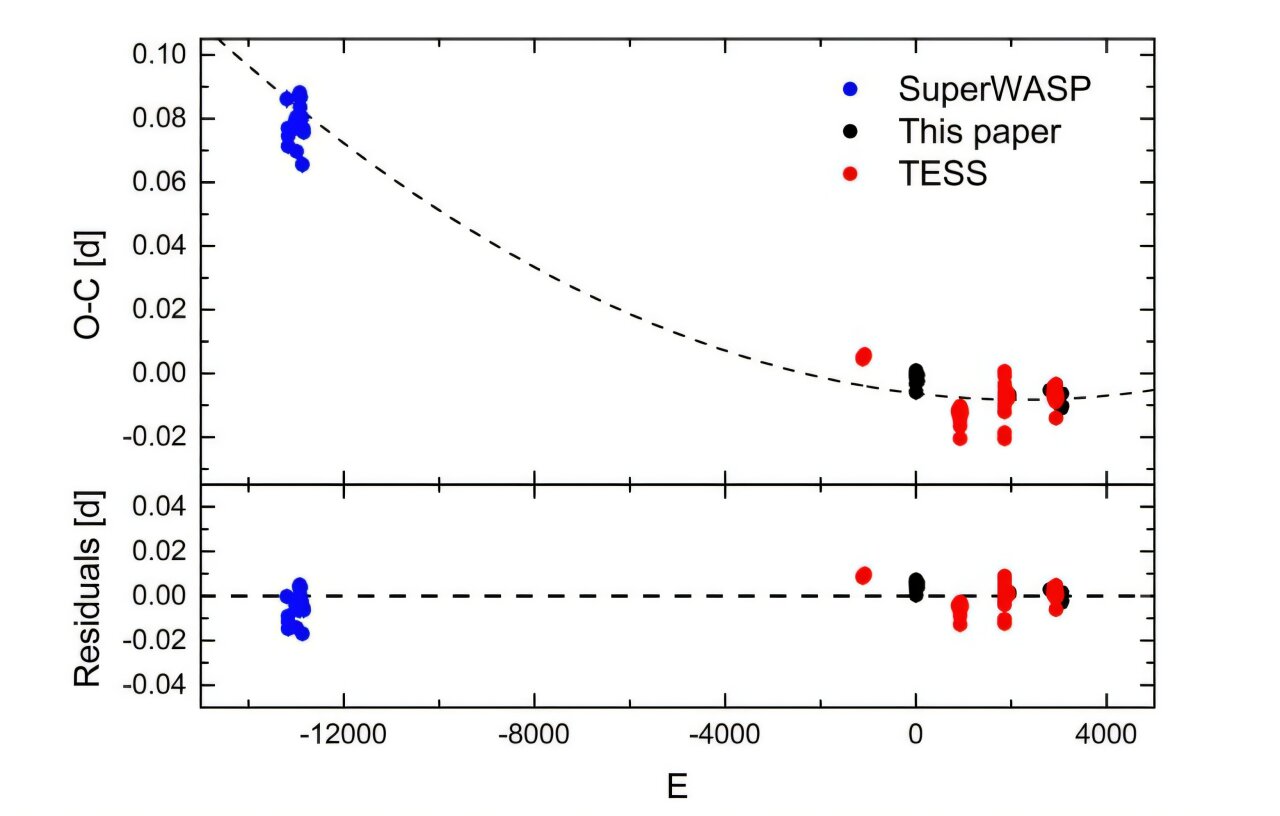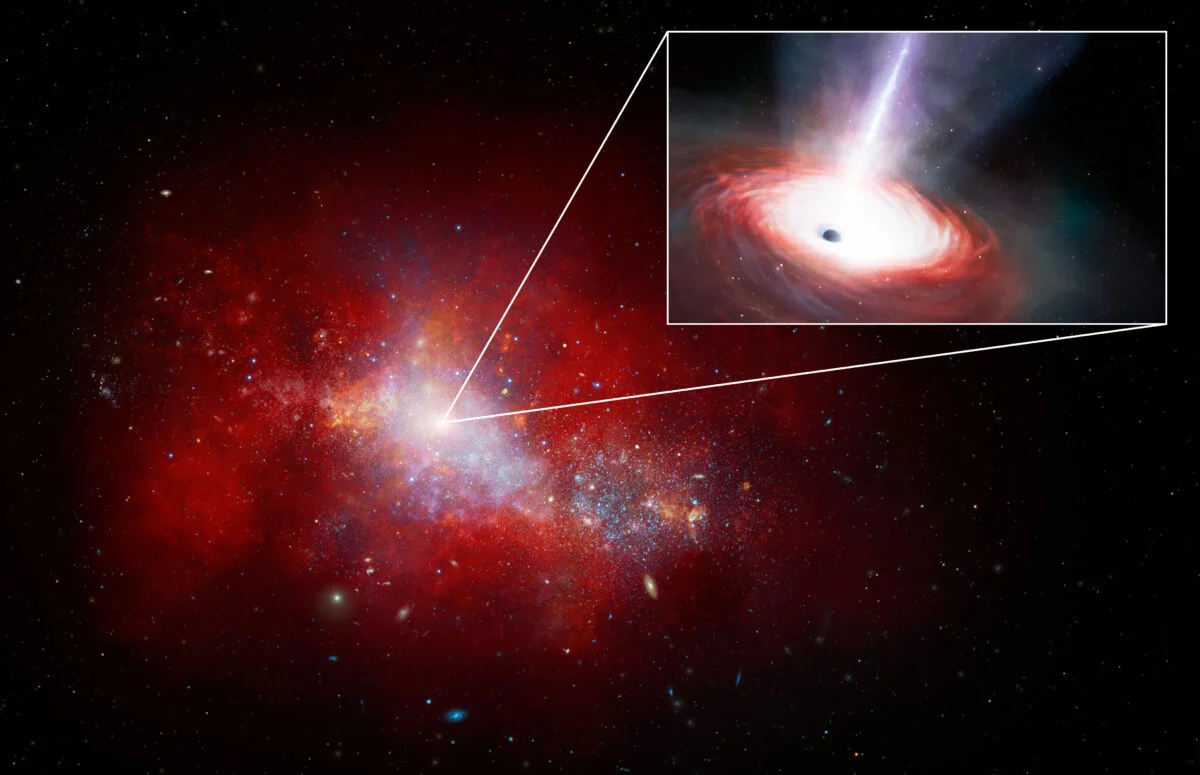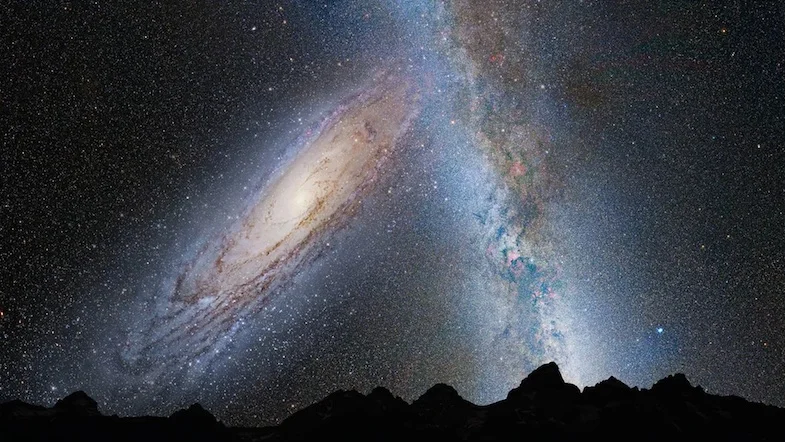
Astronomers Discover Lowest Mass Ratio Contact Binary System Ever Observed
- Research
- July 3, 2024
- 1405
A team of astronomers from China and South Korea has identified a contact binary system with the lowest mass ratio ever recorded. Designated TYC 3801-1529-1, the system has a mass ratio of just 0.0356, challenging current theories about the limits of contact binary formation. The findings, published on November 19 on arXiv, provide new insights into the evolution and dynamics of such systems.
Contact Binaries and Their Unusual Dynamics
Contact binary systems are pairs of stars so close that they share a common gaseous envelope. Despite their differing masses, the stars in these systems typically exhibit similar temperatures and luminosities.
Determining the minimum mass ratio for contact binaries has long been debated. Recent research suggests the theoretical lower limit lies between 0.038 and 0.041. TYC 3801-1529-1, with a mass ratio of 0.0356, falls below this threshold, making it a rare and significant discovery.
Key Properties of TYC 3801-1529-1
TYC 3801-1529-1 was initially classified as a contact binary in 2020. Located approximately 1,260 light-years away, its orbital period is just 0.366 days. Despite its early classification, little was known about its properties until recently.
Using data from the Weihai and Xinlong observatories, along with observations from NASA’s Transiting Exoplanet Survey Satellite (TESS), researchers led by Kai Li of Shandong University conducted a detailed analysis.
Their observations revealed:
- Primary star mass: 2.096 solar masses
- Secondary star mass: 0.075 solar masses
- Primary star radius: 1.93 solar radii
- Secondary star radius: 0.43 solar radii
- Mass ratio: 0.0356 (lowest ever recorded for a contact binary)
- Contact degree: ~35.7%
Additionally, the system’s photometric distance was recalculated to approximately 2,035 light-years, placing it much farther than initially estimated.
Asymmetry in Light Curves and a Hot Spot
Analysis of the 2022 light curves revealed asymmetry, suggesting the presence of a hot spot on the primary star. This feature likely results from uneven energy distribution on the star’s surface, a phenomenon often observed in close binary systems.
Implications for Binary Evolution
The discovery of TYC 3801-1529-1 and its exceptionally low mass ratio challenges existing theoretical models. Current understanding suggests such systems are unstable and may eventually merge.
“The extremely low mass ratio of TYC 3801-1529-1 poses a significant challenge to theoretical research,” the researchers noted. They predict that the two stars may eventually merge into a single object, offering a unique opportunity to study the merger process.
Future Directions
The team emphasized the need for continued observations to monitor the system’s evolution and potential merger. “Future observations should be carried out to continuously monitor this system in order to observe its merging process,” they concluded.
This discovery not only breaks records but also provides crucial insights into the life cycles of close binary systems, paving the way for further exploration of extreme astrophysical phenomena.



